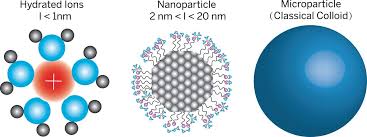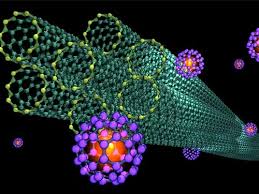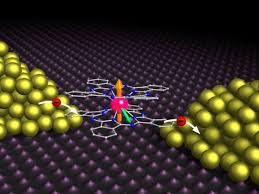Characteristics) or Nanoparticle methodology in nanoparticle production (PhD in Nanoelectronics)
Researcher and author: Dr. ( Afshin Rashid)
Note: Many methods have been developed for the production of nanoparticles or nanostructured particles, which include vapor, liquid and solid state processes.
In general, chemical reactions to produce nanoparticles can take place in any of the solid, liquid, and gaseous states. The common method for producing materials in solids is that by crushing the particles, their contact surface increases and then to increase the penetration of atoms and ions , this mixture increases at high temperatures. In chemistry, the substances with which chemical reactions begin are called reactants and the substances that are converted to them during the reaction (reactant) are called products. Reactors can be solid, liquid, or gas. They themselves are an independent element or can be in the form of multi-component compounds. Multicomponent compounds are commonly called precursors.
To produce nanoparticles with the help of nanotechnology, changes can be made in atoms by controlling the properties. When materials are studied at the nanoscale, the reactions and behavior of atoms are quite different from those studied at the molecular level , because in this realm the physical properties of the material change. This is just like in a ball. Put it in a container and take another ball out of that container. The difference in the nanoscale is so great that even the color, melting point, chemical properties, etc. of materials outside this range are quite different.
In nanotechnology, two methods are considered for manufacturing: bottom-up manufacturing method and top-down manufacturing method. In the bottom-up construction method, materials and materials are made from the molecular surface based on the principles of molecular chemistry, just like a wall made by stacking brick by brick. In the top-down fabrication method, non-atomically controlled nano-objects are fabricated in larger quantities by using state-of-the-art equipment such as atomic microscopes and survey tunnel microscopes to manipulate the process and create new phenomena and properties. Appear on nano-objects. One of the important properties of nanoparticles is the ratio of surface to high volume of these materials. Using this property, powerful catalysts can be produced in nanometer dimensions. These nanocatalysts are the efficiency of reactions. They will greatly increase the chemical and also significantly prevent the production of waste products in the reactions.
The use of nanoparticles in the production of other materials can increase their strength or reduce their weight and increase their chemical and thermal resistance and change their reaction to light and other radiation. So the first application that can be considered for nanoparticles, The use of these materials is in the production of nanocomposites. With the use of nanoparticles, the strength to weight ratio of composite materials will increase dramatically.






